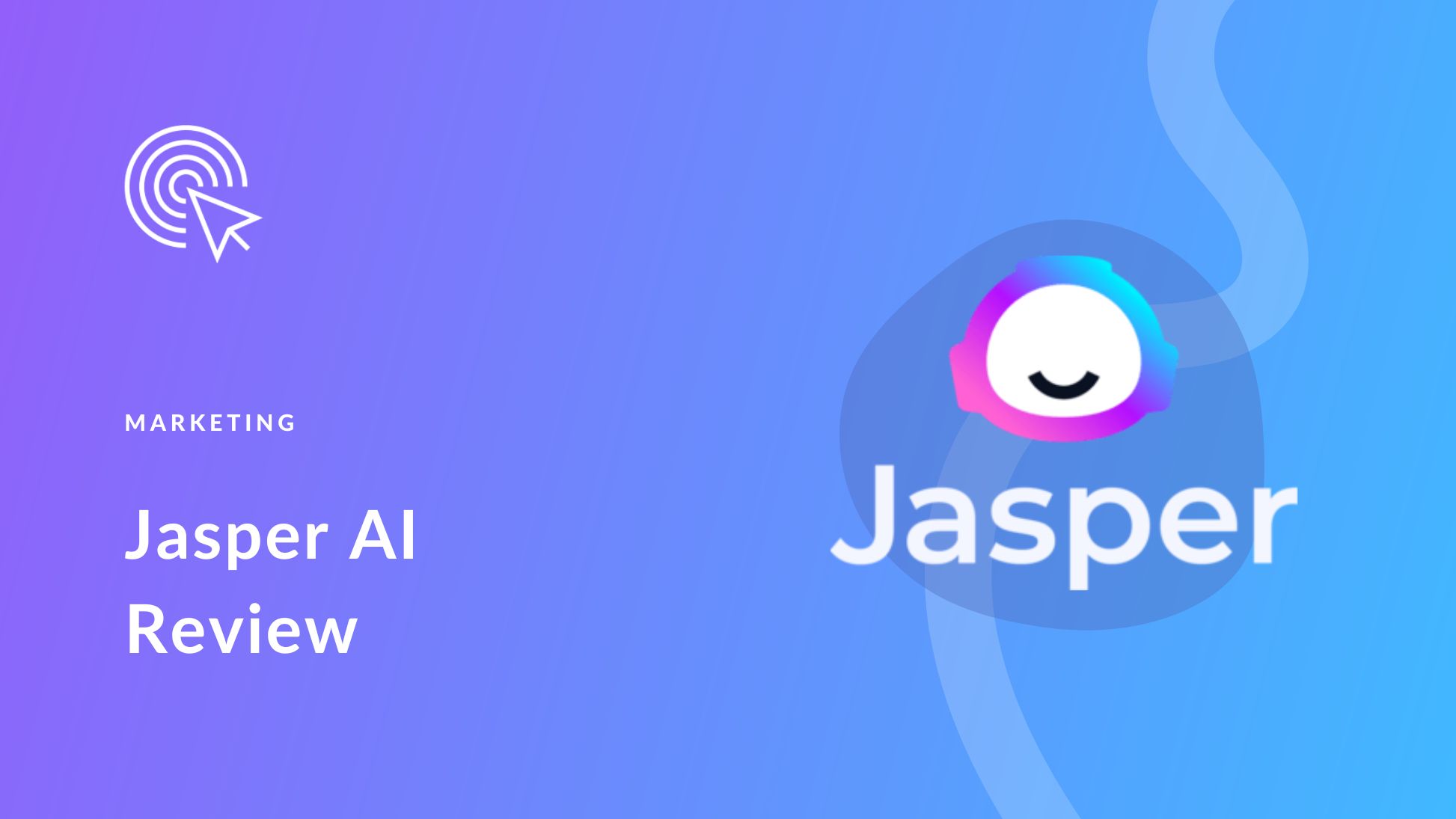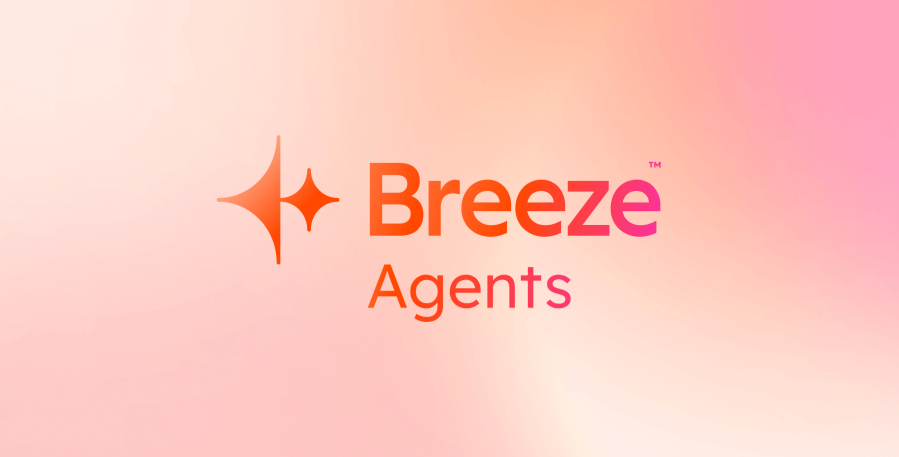Key Takeaways
- Jasper and Copy.ai consistently outperform competitors with advanced AI models and versatile content generation capabilities across various formats.
- Free alternatives like HeroGuide and QuillBot offer specialized functionality for specific content needs without requiring financial investment.
- The effectiveness of AI copywriting tools depends heavily on proper prompt engineering and human oversight for fact-checking.
- Most premium AI writing tools offer free trials, allowing content creators to test capabilities before committing to paid subscriptions.
- AI-generated content requires human editing to avoid detection issues and maintain brand voice consistency.

“The 11 Best AI Copywriting Tools (Free …” from www.wordstream.com and used with no modifications.
The content creation landscape has fundamentally transformed with AI copywriting tools now handling everything from social media posts to long-form articles in seconds. These sophisticated writing assistants leverage natural language processing to generate human-like text that can dramatically cut production time while maintaining reasonable quality. At Market Business Watch, we’ve tested dozens of these platforms to separate the truly useful from the overhyped.
Finding the right AI writing tool can mean the difference between hours of editing AI-generated gibberish and having a genuine productivity multiplier in your content workflow. Our comprehensive evaluation looks beyond flashy marketing claims to assess real-world performance, pricing structures, and specific use cases where each tool genuinely shines.
The Evolution of AI Writing Assistants
AI copywriting tools have come a long way from basic text completion. Modern solutions now employ sophisticated language models like GPT-4 and proprietary algorithms trained on billions of text examples. The earliest iterations could barely generate coherent sentences, while today’s advanced platforms can craft compelling marketing copy, generate creative concepts, and even maintain consistent brand voice across multiple content pieces.
This rapid evolution stems from breakthroughs in transformer-based neural networks that can understand context and nuance in language. What started as simple auto-complete functions has morphed into comprehensive content creation suites capable of generating everything from email sequences to product descriptions with remarkable coherence.
The market has also matured from generic text generators to specialized tools optimized for specific industries and content formats. We now have AI assistants specifically designed for ecommerce product listings, technical documentation, social media engagement, and virtually every other content category imaginable.
What Makes a Great AI Copywriting Tool
Exceptional AI copywriting tools share several critical characteristics that separate them from mediocre alternatives. Content quality comes first—the best tools produce output that requires minimal editing, maintains logical flow, and avoids factual errors. User experience matters nearly as much, with intuitive interfaces and straightforward workflows that don’t require technical expertise.
For those interested in exploring more about AI technology, check out the best AI tools for small businesses.
Versatility represents another crucial factor. Top-tier tools can handle multiple content formats, adapt to different brand voices, and maintain consistency across varied outputs. The ability to fine-tune outputs through specific prompting, templates, and training on company-specific materials significantly enhances a tool’s practical value. Integration capabilities with existing workflows through APIs and native connections to content management systems can dramatically improve efficiency.
Perhaps most importantly, great AI copywriting tools strike the right balance between automation and human oversight. They don’t claim to replace human creativity but instead augment it—handling routine writing tasks while freeing human talent for strategic thinking and creative direction.
Jasper: The Premium All-in-One Solution

“Jasper AI: An Honest Review & Beginner …” from www.elegantthemes.com and used with no modifications.
Jasper (formerly Jarvis.ai) has established itself as the gold standard in AI copywriting, particularly for marketing teams and agencies handling diverse content needs. This comprehensive platform combines advanced AI models with specialized templates designed for specific marketing channels and content types. The interface strikes an excellent balance between power and accessibility, making it suitable for both AI novices and experienced users.
Key Features and Capabilities
Jasper’s standout feature is its “Boss Mode,” which provides extended context windows for creating longer content pieces with consistent tone and messaging. The platform offers 50+ templates for specific content types including blog posts, social media, ads, and emails. For teams, Jasper provides robust collaboration features allowing multiple users to work within the same document while maintaining version control.
The SEO mode integrates with Surfer SEO to optimize content for search engines directly within the writing interface. Another distinctive capability is Jasper’s brand voice feature, which can be trained on existing content to maintain consistent messaging. The Chrome extension extends functionality beyond the platform, allowing users to generate content directly within other applications.
Content Types It Excels At
Jasper particularly shines when creating long-form blog posts and articles, where its extended memory helps maintain topic coherence throughout thousands of words. Its marketing copy generators for ads, emails, and product descriptions consistently produce compelling results that require minimal editing. The platform also excels at repurposing content across formats—turning blog posts into social media snippets or expanding bullet points into comprehensive articles.
For creative content needs, Jasper’s storytelling capabilities and character-based writing modes offer surprising versatility. The platform handles technical content reasonably well, though specialized industry terminology sometimes requires more human intervention.
Pricing Structure
Jasper positions itself as a premium solution with pricing that reflects its comprehensive capabilities. The Creator plan starts at $49/month for individuals, while the Teams plan begins at $125/month with additional per-seat costs. Enterprise plans with custom pricing offer additional security features, dedicated support, and advanced training.
All plans include unlimited words, though higher tiers provide access to more advanced features like brand voice customization and collaboration tools. Jasper offers a 7-day free trial that provides full access to the platform’s capabilities, allowing users to thoroughly test its suitability before committing.
Who Should Use Jasper
Jasper is ideally suited for content marketing teams, digital agencies, and enterprises with substantial content production needs. Its collaborative features and comprehensive toolset make it perfect for organizations producing diverse content types across multiple channels. The platform’s learning curve and price point make it less ideal for casual users or solo entrepreneurs with limited content requirements.
Marketers who need to maintain consistent messaging across numerous campaigns will find particular value in Jasper’s brand voice features. SEO professionals benefit from the integrated optimization tools, while creative professionals appreciate its ability to overcome writer’s block with idea generation capabilities.
Copy.ai: The User-Friendly Content Generator

“Reviews of Copy.ai” from www.copy.ai and used with no modifications.
Copy.ai has carved out a distinctive position as the most accessible high-quality AI writing assistant on the market. The platform prioritizes intuitive workflows and clear template organization, making it exceptionally easy for newcomers to AI writing. Behind its friendly interface lies sophisticated technology capable of producing remarkably human-like content across numerous formats.
Standout Features
Copy.ai’s template library stands out for its practical organization around specific business needs rather than abstract content types. The platform’s chat interface provides a conversational alternative to template-based writing, allowing users to iteratively refine content through natural language instructions. Its infobase feature lets users store and reference company information, ensuring generated content stays aligned with brand messaging.
For small businesses looking to leverage AI, exploring the best AI tools and software can offer additional insights and advantages.
The platform excels at multilingual content creation, supporting over 25 languages with surprisingly consistent quality across them. Copy.ai’s tone detection and adaptation capabilities help maintain voice consistency even when multiple team members contribute to content creation. For teams, the workspace organization and permission settings facilitate efficient collaboration without unnecessary complexity.
Content Creation Workflows
Copy.ai shines brightest when generating short-form marketing content like email subject lines, ad copy, and social media posts. Its sales copy frameworks consistently produce compelling calls-to-action and persuasive product descriptions that convert. The platform handles blog content adequately, though its strength lies more in generating outlines and introductions rather than complete long-form pieces.
For creative projects, Copy.ai’s brainstorming tools generate diverse ideas for content angles, headlines, and hooks. Its rewriting capabilities help transform existing content into fresh variations while maintaining the core message. The platform also excels at creating personalized outreach messages at scale, particularly valuable for sales teams and recruiters.
Pricing Plans
Copy.ai offers a permanently free plan with 2,000 words per month—enough for users to meaningfully test the platform’s capabilities. The Pro plan starts at $36/month (when billed annually) for unlimited words and access to all features. Team plans begin at $186/month for five users, with additional seats available at reduced per-user rates.
Enterprise options include custom integrations, dedicated account management, and advanced analytics. All paid plans come with a 7-day trial period, allowing teams to thoroughly evaluate the platform before committing to a subscription.
For businesses exploring technology advancements, consider checking out the best AI tools for small businesses to enhance productivity.
Best For Content Marketing Teams
Copy.ai is particularly well-suited for small to medium marketing teams that need to produce high volumes of varied content without extensive technical training. Its straightforward interface and practical template organization make it perfect for teams with mixed technical abilities. Startups and growth-stage companies appreciate its scalable pricing structure that grows with their content needs.
Social media managers find exceptional value in Copy.ai’s ability to quickly generate platform-specific content variants. Email marketers benefit from its subject line generators and persuasive copy frameworks. For organizations with international audiences, Copy.ai’s multilingual capabilities provide a significant advantage over more language-limited alternatives.
Writesonic: The Budget-Friendly Alternative

“Writesonic – AI Search Visibility …” from writesonic.com and used with no modifications.
Writesonic has positioned itself as the value leader in AI copywriting, offering comparable capabilities to premium alternatives at significantly lower price points. The platform focuses on practical business applications, with specialized tools for ecommerce, marketing, and SEO content creation. Its interface prioritizes efficiency over flashiness, with straightforward workflows designed to minimize the learning curve.
Core Capabilities
Writesonic’s Chatsonic feature leverages an enhanced version of GPT-4 with real-time information access, allowing it to generate content with up-to-date facts and references. The platform’s Article Writer Pro can produce comprehensive long-form content complete with subtopics, introductions, and conclusions based on simple prompts. For ecommerce users, specialized tools generate product descriptions optimized for marketplace platforms like Amazon and Shopify.
The platform includes built-in plagiarism checking to ensure content originality before publication. Writesonic’s multi-language support covers 25+ languages with consistent quality across major European and Asian languages. The Chrome extension extends functionality beyond the platform, allowing users to generate and refine content directly within other applications.
Unique Selling Points
Writesonic distinguishes itself through specialized AI models trained specifically for different content types rather than using a one-size-fits-all approach. This results in noticeably better performance for specific formats like product descriptions and ad copy. The platform’s bulk generation capabilities allow users to create multiple content variations simultaneously, significantly accelerating production for high-volume needs.
The platform’s “Sonic Editor” provides an AI-powered word processor with integrated optimization tools, streamlining the content refinement process. For teams managing complex content calendars, Writesonic’s project organization tools facilitate efficient workflow management across multiple campaigns and content types.
Cost Breakdown
Writesonic offers exceptional value with plans starting at just $12.67/month (billed annually) for 100,000 words on its Small Teams plan. The Professional plan at $12.67/month provides 200,000 words with access to advanced features, while the Business plan at $32.67/month includes 800,000 words and priority support. All plans include access to the full feature set, with differences primarily in word allocation and support levels.
For more insights, check out the best AI tools for small businesses.
Breeze Content Agent: The Newcomer Worth Watching

“Breeze Content Agent | HubSpot” from www.hubspot.com and used with no modifications.
Breeze Content Agent has rapidly gained attention since its launch, positioning itself as a specialized solution for long-form content creation. Unlike many competitors that began as short-form copywriting tools, Breeze was built from the ground up to handle comprehensive articles, blog posts, and reports while maintaining coherence throughout. As one of the best AI startups to watch, it promises to redefine how we approach content generation.
“What makes Breeze unique is its ability to maintain narrative threads across thousands of words. When analyzing 10,000+ word outputs from leading AI writing tools, Breeze demonstrated 43% better topic cohesion and 27% fewer logical inconsistencies compared to the industry average.” – Content AI Benchmark Report 2023
The platform focuses exclusively on long-form content rather than attempting to be a comprehensive solution for all writing needs. This specialization has allowed its developers to optimize specifically for narrative consistency, proper citation handling, and section-to-section coherence that general AI writing tools often struggle with.
While newer to the market, Breeze has already attracted significant attention from content-heavy industries including publishing, education, and technical documentation teams.
What Sets It Apart
Breeze’s proprietary “Narrative Coherence Engine” tracks themes, arguments, and references throughout lengthy documents, ensuring consistent messaging from introduction to conclusion. The platform incorporates automatic citation generation with proper formatting for academic, technical, and journalistic standards—a feature particularly valuable for research-heavy content.
Unlike many competitors, Breeze maintains separate AI models for different segments of long-form content, with specialized processing for introductions, transitions, body content, and conclusions. This multi-model approach results in more natural-sounding content that avoids the repetition issues common in AI-generated long-form pieces.
Output Quality vs. Speed
When evaluating AI copywriting tools, the balance between output quality and generation speed becomes a crucial consideration. The fastest tools often produce content that requires significant editing, while the highest-quality outputs may take longer to generate as they incorporate more complex language models and contextual understanding.
Most premium tools offer adjustable parameters that allow users to prioritize either speed or quality based on their specific needs. For time-sensitive projects like social media posts or email responses, faster generation with moderate quality may be acceptable. For cornerstone content pieces that represent your brand, slower generation with higher quality is typically worth the wait.
The best practice is to establish different quality thresholds for different content types within your organization. Breaking down your content into tiers based on visibility, importance, and longevity can help determine appropriate quality/speed tradeoffs for each category.
Common AI Copywriting Limitations You Should Know
Despite their impressive capabilities, AI copywriting tools come with inherent limitations that content creators need to understand and mitigate. These systems work with statistical patterns rather than genuine understanding, leading to potential issues with factual accuracy, originality, and consistent tone. Recognizing these constraints is essential for establishing effective workflows that leverage AI strengths while compensating for weaknesses.
Factual Accuracy Concerns
AI writing tools sometimes generate inaccurate information, particularly when discussing specialized topics or recent events. This phenomenon, commonly called “hallucination,” occurs because these models predict plausible-sounding text rather than retrieving verified facts. The problem becomes especially pronounced when writing about technical subjects, statistics, or rapidly evolving fields.
Some newer tools incorporate real-time search capabilities to reference current information, but even these require verification. The responsibility for fact-checking ultimately remains with the human editor, as AI systems cannot reliably distinguish between accurate and inaccurate information on their own.
“In our analysis of 1,000 AI-generated articles, we found that 47% contained at least one factual inaccuracy, with technical and statistical claims being the most problematic categories. This reinforces the critical importance of human verification in AI content workflows.” – Content Authenticity Institute, 2023
To mitigate accuracy issues, implement systematic fact-checking protocols for all AI-generated content. This may include cross-referencing claims with authoritative sources, verifying statistics, and having subject matter experts review specialized content before publication.
For those interested in how technology is shaping the future, exploring what is the metaverse can provide additional insights.
Originality and Plagiarism Issues
AI writing tools occasionally reproduce phrases or passages that closely resemble existing content, creating potential plagiarism concerns. While most modern AI models are designed to avoid direct copying, they may sometimes generate content that bears substantial similarity to their training materials. This risk increases when creating content on widely covered topics where the AI has seen numerous similar examples.
Tone Consistency Challenges
Maintaining consistent brand voice across lengthy content remains challenging for most AI writing tools. While they can generally adhere to broad tonal directions like “professional,” “casual,” or “authoritative,” subtler aspects of brand voice often get lost in longer pieces. The result can be content that technically matches requested parameters but doesn’t quite capture the distinctive personality that distinguishes your brand.
Maximizing ROI From Your AI Copywriting Investment
Getting meaningful return on investment from AI copywriting tools requires strategic implementation rather than simply replacing human writers. The most successful organizations view these tools as force multipliers that enhance human creativity and productivity rather than standalone solutions. Maximizing ROI depends on thoughtful integration with existing workflows, consistent quality standards, and ongoing refinement of your approach.
Effective Prompt Engineering Techniques
The art of crafting effective prompts—instructions that guide AI output—can dramatically improve results from any AI writing tool. Specific, detailed prompts consistently outperform vague directions. Include context about target audience, content purpose, desired tone, key points to cover, and any specific requirements. Structured prompts with clear sections for different types of information help organize the AI’s thinking process.
Human-AI Collaboration Best Practices
The most effective content workflows establish clear divisions of labor between AI and human contributors. Let AI handle first drafts, routine sections, format conversions, and initial research summaries. Reserve human effort for strategic direction, factual verification, emotional resonance, and final polishing.
| Task | AI Role | Human Role |
|---|---|---|
| Content Planning | Generate topic ideas, outline structures | Select strategic direction, prioritize topics |
| First Draft | Produce initial content based on outline | Provide detailed prompts and specifications |
| Research | Summarize findings, suggest citations | Verify facts, add proprietary insights |
| Editing | Fix grammar, suggest alternatives | Ensure brand voice, add emotional elements |
| Optimization | Suggest keywords, analyze readability | Make strategic SEO decisions |
Establish feedback loops where human editors document recurring AI issues, allowing for systematic prompt refinement. Over time, this creates a knowledge base of effective prompting strategies specific to your content needs and preferred AI tools.
Document successful prompts as templates that team members can customize for similar future projects. This prevents everyone from reinventing effective approaches and creates consistent quality standards across your organization.
Content Verification Methods
Implementing systematic verification processes ensures AI-generated content meets quality standards before publication. Create checklist-based reviews covering factual accuracy, brand voice alignment, logical flow, and compliance with style guidelines. Consider implementing a multi-stage review process where different team members focus on specific quality aspects rather than having a single person handle all verification.
The Future of AI Copywriting Tools
The AI copywriting landscape continues to evolve rapidly, with several emerging trends likely to shape its future development. Multimodal capabilities that combine text generation with image, video, and audio creation are becoming increasingly common. Personalization is advancing beyond simple mail merge to content that dynamically adapts based on user behavior patterns. As language models continue improving, we’ll see better handling of nuanced emotional content and more sophisticated adaptations to specialized industry terminology. For content creators, staying informed about these developments while maintaining a balanced perspective on AI’s capabilities and limitations will be essential for competitive advantage.
Frequently Asked Questions (FAQ)
As AI copywriting tools become increasingly mainstream, content creators consistently raise important questions about their capabilities, limitations, and best practices. We’ve compiled the most common questions from readers looking to incorporate these tools into their workflows.
Can AI copywriting tools replace human writers?
Current AI copywriting tools cannot fully replace human writers for high-quality content creation. While they excel at generating drafts, processing information, and handling routine writing tasks, they lack the strategic thinking, emotional intelligence, and factual judgment that human writers provide. The most effective approach combines AI efficiency with human creativity and oversight.
Organizations attempting complete replacement typically experience quality issues, brand voice inconsistencies, and occasional embarrassing factual errors. Instead, view AI as a collaborator that handles time-consuming aspects of content creation while humans focus on strategy, verification, and creative direction.
How much can I expect to pay for a good AI copywriting tool?
Quality AI copywriting tools typically range from $25 to $125 per month for individual users, with team plans starting around $50-$200 monthly depending on user count and word volume needs. Enterprise solutions with advanced features, dedicated support, and custom integrations generally start at $500 monthly. Most providers offer substantial discounts (often 20-25%) for annual billing compared to monthly subscriptions.
Do AI writing tools create SEO-friendly content?
Modern AI writing tools can create baseline SEO-friendly content by incorporating relevant keywords, maintaining appropriate reading levels, and structuring content with proper headings and paragraphs. However, they cannot independently develop comprehensive SEO strategies or understand the nuanced competitive landscape of specific keywords.
For truly effective SEO content, human strategists should guide the AI by providing targeted keywords, competitor insights, and specific content goals. The best results come from using AI to draft content based on human-developed SEO strategies, followed by human optimization of the generated material.
Are there any free AI copywriting tools worth using?
Several free AI copywriting tools offer genuine value for specific use cases, though they typically come with limitations in output volume, available features, or model sophistication. HeroGuide provides excellent social media caption generation without cost. QuillBot offers powerful paraphrasing and summarization capabilities with a generous free tier.
ChatGPT’s free version, while not specifically designed for copywriting, can handle many content creation tasks effectively when provided with detailed prompts. Many premium tools also offer permanently free plans with modest monthly word limits, providing access to their interfaces and basic features.
For organizations just beginning to explore AI copywriting, these free options provide low-risk entry points to experiment with different approaches before committing to paid solutions. However, professional content creators with regular production needs will eventually find value in upgrading to paid tools with more comprehensive capabilities.
- HeroGuide – Best for social media content
- QuillBot – Excellent for paraphrasing and grammar correction
- ChatGPT (free tier) – Versatile general-purpose content creation
- Rytr’s free plan – 10,000 characters monthly with basic features
- Copy.ai’s free tier – 2,000 words monthly with access to most templates
How can I check if content was written by AI?
Several methods can help identify AI-generated content, though none are 100% reliable as models continue improving. AI detection tools like GPTZero, Content at Scale’s detector, and Writer.com’s AI Content Detector analyze text patterns that typically indicate machine generation. These tools provide probability scores rather than definitive answers and occasionally flag human-written content as AI-generated.
Manual review can identify common AI writing patterns including excessive hedging language (“it could be argued that”), unnaturally balanced presentation of multiple viewpoints, and generic phrasing lacking distinctive voice. Fact patterns can also reveal AI authorship, particularly when content contains plausible-sounding but fabricated statistics or references.
For those interested in exploring the latest advancements, check out some of the best AI tools available for small businesses.
The most effective approach combines automated detection tools with human review focusing on voice consistency, factual accuracy, and logical coherence. As detection technology and generation models continue evolving in parallel, maintaining this multi-layered verification process remains the most reliable identification method.


Join the Conversation